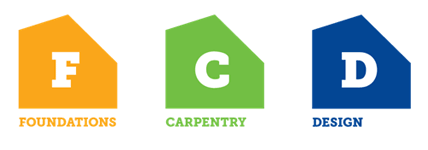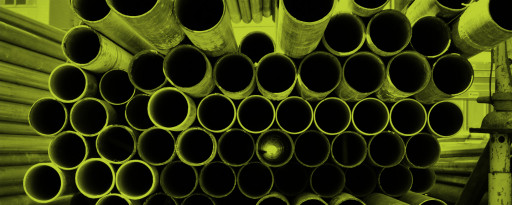Liquefaction lessons
Codewords 95: June 2020
Following a 2-year transition period, Acceptable Solution B1/AS1 will no longer be used for foundations on land prone to liquefaction. Foundations will be consented as a Verification Method or Alternative Solution.

New Zealand is a high earthquake hazard region, and earthquake considerations are integral to the design of the built environment. Liquefaction is a real risk (especially to buildings) as it can result in settlement, tilting, stretching and damage to services and utilities.
What is liquefaction?
Liquefaction is when the strength and stiffness of a soil is reduced by earthquake shaking or other rapid loading. Three key elements are all required for this to occur:
- Loose soil – typically sands and silts or, in rare cases, gravel
- Saturated soil – that is, below the ground water table
- Sufficient ground shaking – a combination of the earthquake duration and intensity of shaking.

What are its effects?
In areas with soils that are susceptible to liquefaction, significant damage to structures and lifelines can be caused by liquefaction-related lateral spreading and lateral stretching.
Lateral spreading is the horizontal movement of ground towards the free face (open face) or downslope as a result of liquefaction of shallow underlying soil deposits.
Lateral stretching appears as ground cracks that typically occur when the ground moves horizontally between two points over a given length.
Lessons from Christchurch
Widespread liquefaction in the Canterbury earthquakes has resulted in an extensive amount of research and guidance, developed locally and nationally, on past occurrence of and future vulnerability to liquefaction.
There is also a broad understanding of the effects and how to mitigate these. As a result of this awareness, buildings constructed after the earthquakes are to be built to the latest standards for liquefaction-prone land and will be more resilient than the older building stock.
Building Code change to foundations
Traditional foundation solutions contained within B1/AS1 were found to perform poorly on ground that is susceptible to liquefaction and lateral spreading during an earthquake. Therefore, Acceptable Solution B1/AS1 will no longer be used on ground prone to liquefaction or lateral spreading. To implement this change, the current limits for 'good ground' in Building Code clause B1 Structure have been adjusted.
This change means that foundation solutions on land prone to liquefaction and/or lateral spreading will need to be consented as a Verification Method or Alternative Solution.
Some cost concerns raised
Feedback from public consultation in August/September 2019 revealed that most of the building and construction sector believes that the change regarding liquefaction-prone ground will increase the cost to build on liquefaction-susceptible land.
However, this will be offset by a gradual increase in seismic resilience and a corresponding reduction in post-earthquake disruption to Kiwi homes.
Experience from the Canterbury rebuild also demonstrates that the engineered foundations, in time, are actually cheaper than conventional slab-on-ground foundations due to increased availability and changes in supply and demand.
Key outcomes of the change to liquefaction-prone ground requirements include:
- achieving greater resilience via appropriate initial geotechnical investigations
- increasing sector efficiency through communication, collaboration and education
- raising the awareness of the risk of liquefaction and its impact on land and buildings.
2-year transition period
There is a 2-year transition period for these changes, giving everyone the opportunity to come up to speed with the requirements.
During the transition, MBIE will run an awareness campaign (education and training) targeting the general sector and advising key stakeholders of Building Code updates.
The Building Code update consultation November 2019 webpage(external link) has more information on the biannual Building Code updates programme.
You can check out the updated Acceptable Solutions and Verification Methods on the Building Performance acceptable solutions and verification methods website.(external link)
Quiz
1. During an earthquake, soil and water can combine to form a semi-solid material in a process called?
- liquid faction
- liquefaction.
- quick sanding.
2. What report is required to assess a site is prone to liquefaction or not:
- Geotechnical report.
- Structural report.
- Building services report.
3. Foundation solutions on land prone to liquefaction and/or lateral spreading will need to be:
- consented as a Verification Method or Alternative Solution.
- compliant with B1/AS1.
- consented as an Acceptable Solution.
4. When will the new changes regarding building on liquefaction prone areas come in to effect?
- Immediately, they are already in effect.
- In two years, allowing a transition period to map liquefaction prone areas and increase awareness among stakeholders.
- The changes are optional.
Check answers
1. During an earthquake, soil and water can combine to form a semi-solid material in a process called?
b. liquefaction.
2. What report is required to assess a site is prone to liquefaction or not:
a. Geotechnical report.
3. Foundation solutions on land prone to liquefaction and/or lateral spreading will need to be:
a. consented as a Verification Method or Alternative Solution.
4. When will the new changes regarding building on liquefaction prone areas come in to effect?
b. In two years, allowing a transition period to map liquefaction prone areas and increase awareness among stakeholders.
